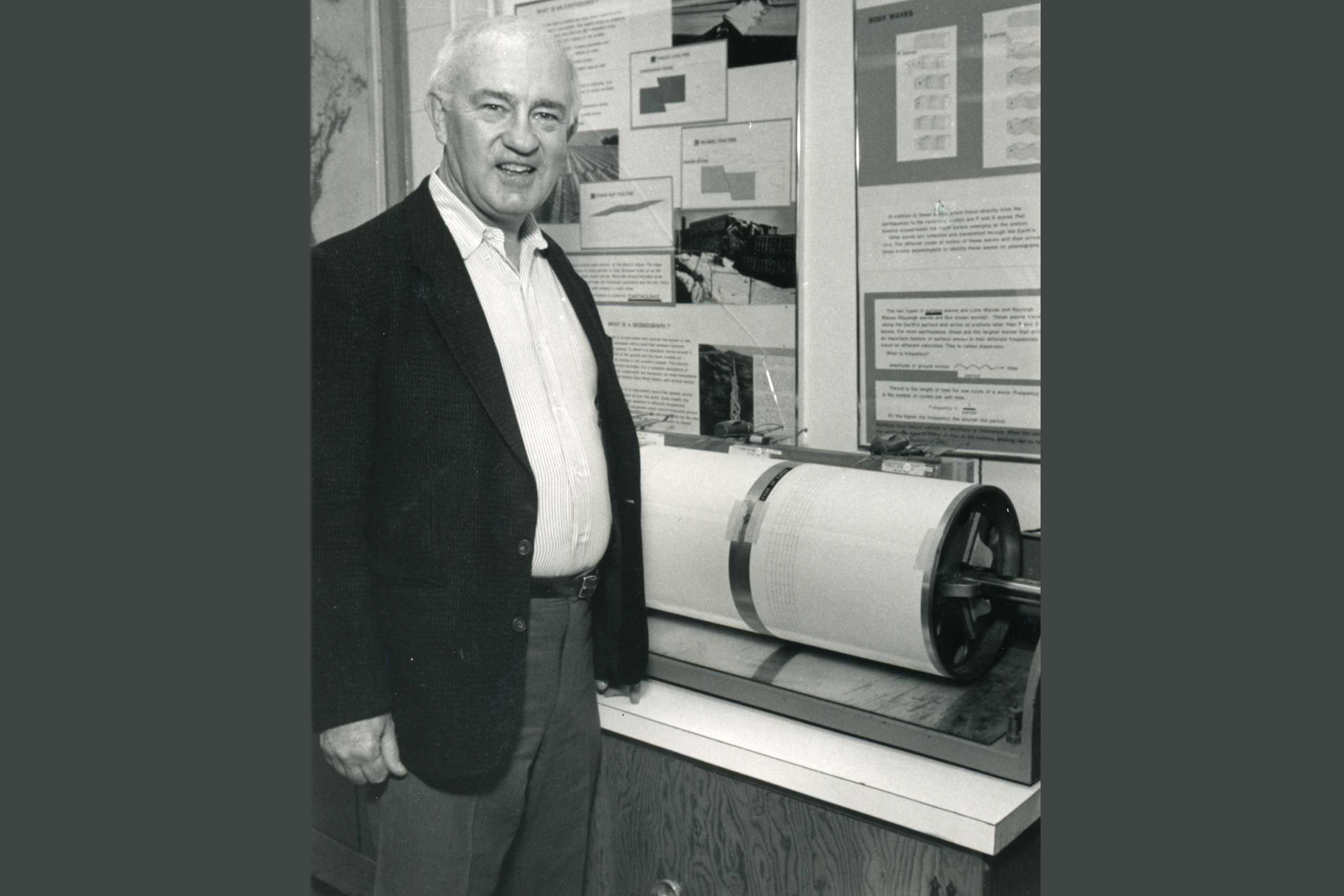Plate Tectonics Pioneer Challenges the Way Earth Works
-
-
Slice of MIT
Filed Under
Recommended

As an undergrad at MIT in the 1950s, Lynn Sykes ’59, SM ’60 became interested in the theory of continental drift, which proposed that the world’s great landmasses had wandered across Earth over time. The theory had been proposed most notably by Alfred Wegener in the early 20th century, but it was largely considered outlandish by the scientific community. “I was told that decent graduate students didn’t work on such crazy ideas,” he remembers. But just a few years later, he would make a discovery that would help prove the theory’s legitimacy.
It was recognized right then and there, and by a number of people who previously thought it could not and did not exist.
At MIT, Sykes was inspired by a first-year geology course with the late professor Bill Brace ’46, ’49, PhD ’53 and later by MIT’s partnership with Woods Hole Oceanographic Institute to work in the field of oceanic seismology. After earning a bachelor’s and master’s in geology and geophysics from the Institute, he pursued his doctorate at Columbia University, where he studied deep-ocean earthquakes. It was there that he discovered a curious phenomenon in the South Pacific—a line of earthquake activity along a 600-kilometer-long fracture zone that had never been observed before. Sykes discovered a similar phenomenon in the Atlantic north of Iceland. They turned out to be the first evidence of a transform fault, a feature proposed by Canadian geophysicist John Tuzo Wilson in which seismic activity occurs in a rupture between two ridges, leading the seafloor to spread and continents to move.
Sykes presented his data at a conference in 1966, showing that continental drift, now known as plate tectonics, was occurring. “It was recognized right then and there, and by a number of people who previously thought it could not and did not exist,” says Sykes, who is now recognized as one of the progenitors of the concept. That claim to fame is just one instance in which Sykes has tilted against conventional wisdom in his long career as a seismologist.
Even as a child, Sykes began to understand how attention to data could prevail against the herd. He recalls an instance in which his father, a weather forecaster, predicted a bout of extreme cold one Thanksgiving weekend. In 10th grade, Sykes had another formative experience when he received an award for an essay on the then-nascent theory of global warming. “It led me to believe that there were important societal things science could contribute to, and I wanted to be a part of that,” he says.
Sykes became a professor at Columbia’s Lamont-Doherty Earth Observatory after earning his PhD and turned his attention toward monitoring seismic waves from underground nuclear testing. In the late 1960s, many doubted that underground nuclear tests could be distinguished from earthquakes, making a treaty on underground testing impossible to enforce. Sykes proved naysayers wrong by helping show differences in their seismic signatures. “People said there were numerous ways Russians could cheat, and along with others, I was able to show that was not the case,” says Sykes, who testified before Congress and traveled to Moscow for the signing of the Threshold Test Ban Treaty in 1974.
He continued his research over the decades, showing that it was possible to detect even tiny seismic waves from nuclear tests, leading to the Comprehensive Nuclear-Test-Ban Treaty, banning all nuclear explosions on Earth, in 1996. “I was happy I continued to work on this for decades,” Sykes says.
Now 87, Sykes is still challenging ideas about the way Earth works. This February, he published a controversial paper about earthquakes along California’s San Andreas Fault, arguing that events such as the 1989 Loma Prieta quake that devastated San Francisco could have been predicted from signs occurring decades in advance. “In the future, knowing those signs can help us take steps to strengthen sites years ahead of time,” he argues. That idea runs counter to current beliefs that the locations of future earthquakes are impossible to predict. For Sykes, he says it’s not about—and has never been about—being right or debating people, he just follows the data to help solve problems. “I think that these are important problems, that's what I emphasize.”
Photo (top): Lynn Sykes with an old-fashioned rotating-drum seismograph at Lamont-Doherty Earth Observatory in 2015. Credit: Courtesy Lamont-Doherty Earth Observatory.







